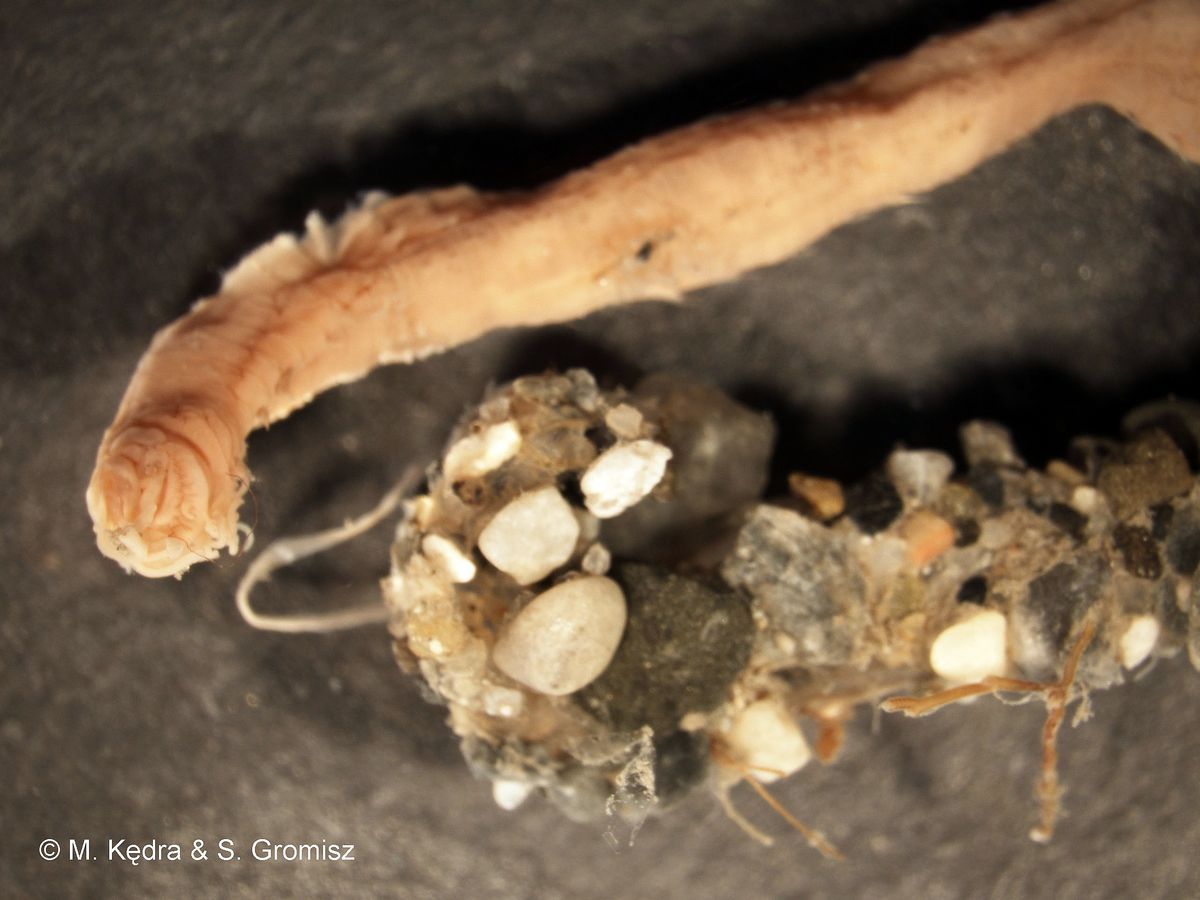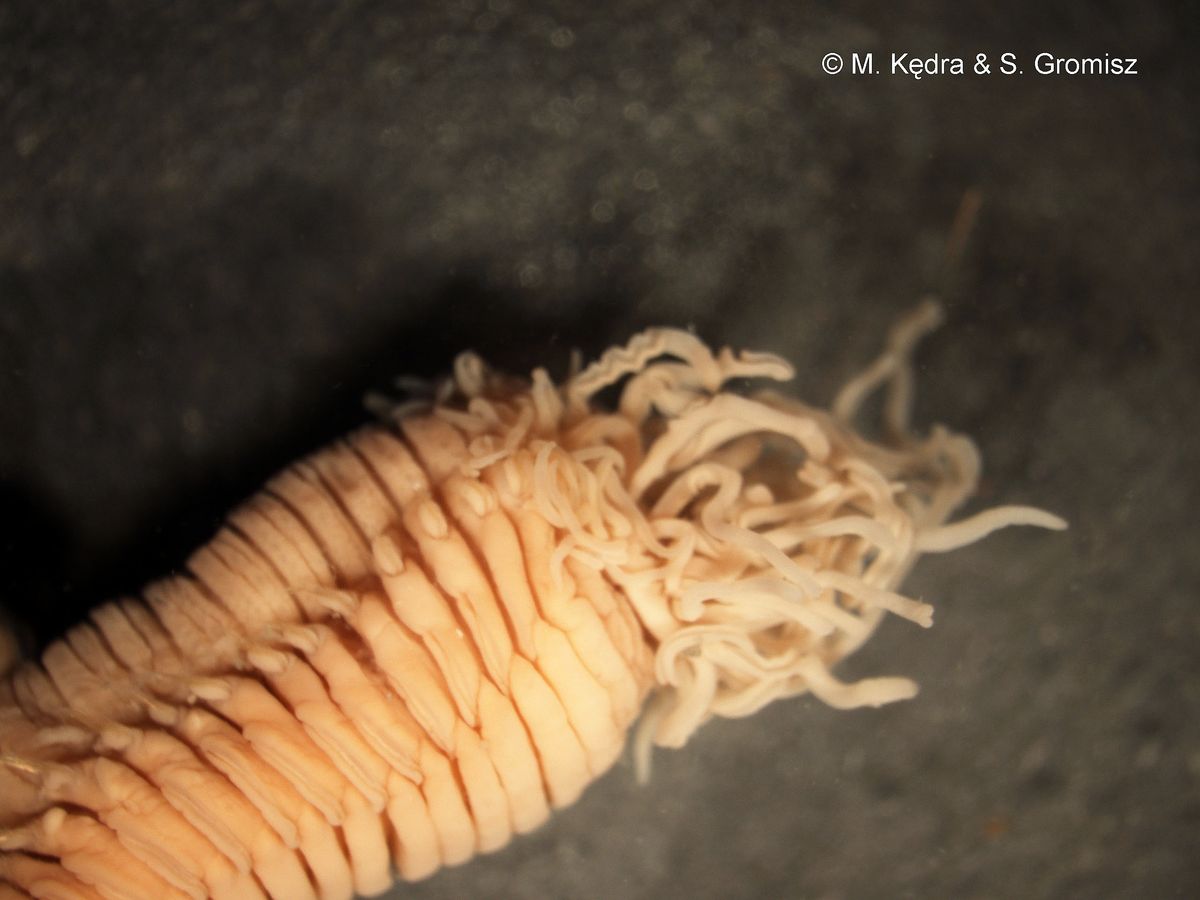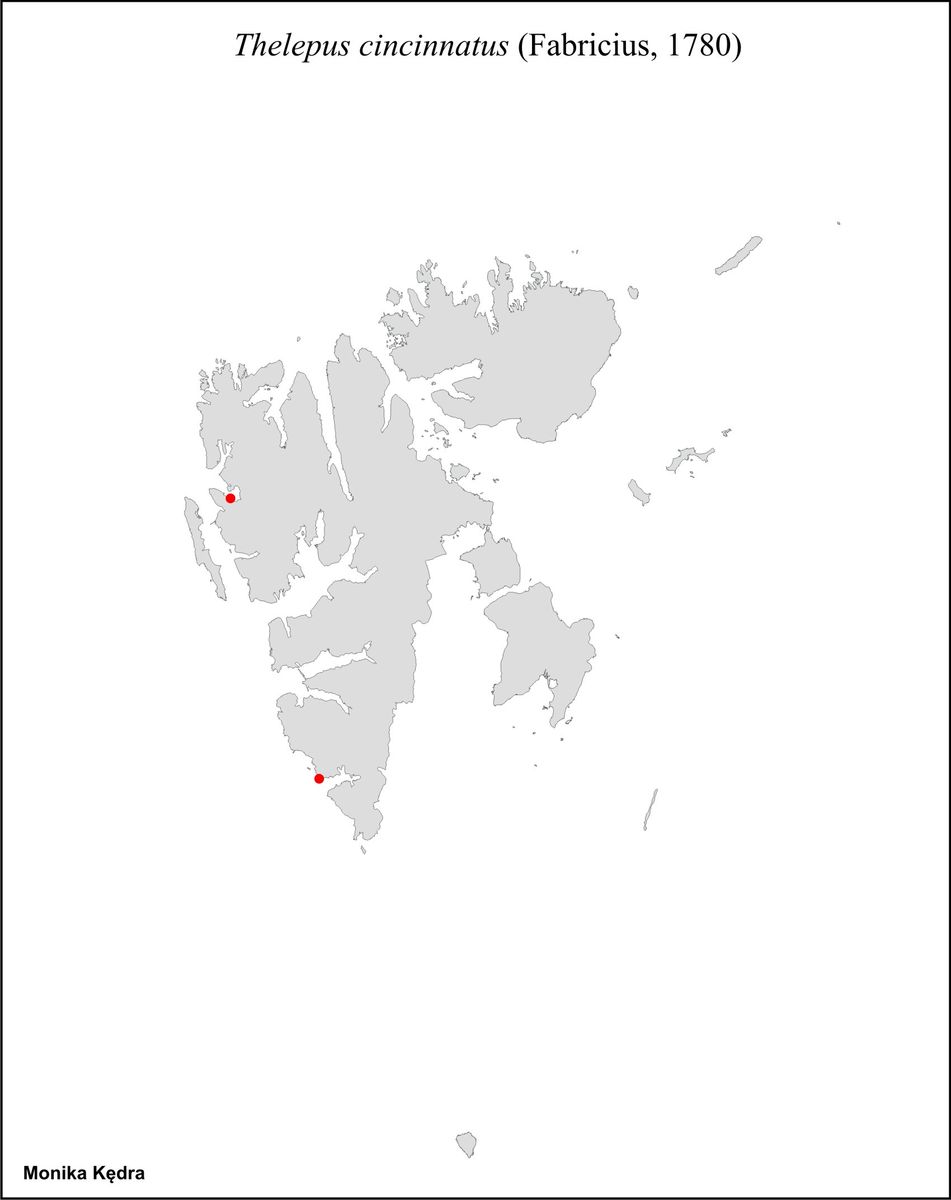Thelepus cincinnatus (Fabricius, 1780)

|

|

|
Amphitrite cincinnata O. Fabricius, 1780
Terebella madida Frey & Leuckart, 1847
Thelepus bergmanni Leuckart, 1849
Lumara flava Stimpson, 1854
Terebella pustulosa Grube, 1860
Venusia punctata Johnston, 1865
Phenacia terebelloides de Quatrefages, 1866
Phenacia pulchella Parfitt, 1866
Phenacia retrograda Claparède, 1870
Phenacia ambigrada Claparède, 1870
Heterophenacia nucleolata Claparède, 1870
Heterophenacia renouardi Marion, 1883
Thelepodopsis flava Sars, 1872
Thelepus circinnatus Malmgren, 1866
Thelepus crassibranchiatus Treadwell,1901
Thelepus cincinnatus Hessle, 1917
Distinguishing characteristics
Body long, thorax and abdomen not discernible.
Tentacles numerous, very long, thick.
2 series of branchiae (free filaments arranged in transverse rows on dorsum).
Notopodial chaetae through many segments (over 30).
Species description
Body long, anterior part cylindrical, posterior part tapering. Tentacles numerous, very long, thick. Upper lip low, broad and thick. Many eyespots. Two series of branchiae (on segments 2 and 3) consisting of a number of free filaments arranged in transverse rows on dorsum. Thorax and abdomen not discernible. Notopodial chaetae smooth of two types: long straight and short distally curved, starting at segment 3, extending through many segments (over 30). Uncinigerous tori from segment 6, never in two parallel rows. Pygidium with minutely scalloped edge. Tube - irregularly curved, often very long.
A tough, transparent layer of secretion, often firmly glued to stones or large shells, the free surface encrusted with coarse sand grains and shell fragments.
Size
Up to 200 mm for over 100 segments.
Color
Alive body pink, orange or brownish with lighter ventral and lateral areas, gills red, tentacles pale pink, orange or brownish with red spots. In alcohol pale yellow.
Habitat
On most kinds of substrata, ranging from mud through sand to solid rocks, especially common and abundant on coarse sand with shells. Littoral to a depth of about 4000 m.
Euhaline, temporarily polyhaline.
The species seems to prefer water with a current.
Mobility
Sedentary.
Feeding
Surface deposit feeder.
Facultative suspension feeder.
Life cycle
The eggs are very large (diameter 762 µm, Thorson 1946) and development is therefore believed to be non-pelagic.
Distribution
Cosmopolitan, mainly cold seas, Eastern North Atlantic to Cape Verde, Mediterranean, American Atlantic, Caribean, West Greenland, Canadian and Alaskan Arctic, White Sea, Siberian Arctic, Bering Sea, Sea of Okhotsk, Japan, North American Pacific, Antarctic; East Greenland, Svalbard, Barents Sea, Jan Mayen, Iceland, Norwegian Sea, the Faeroes, Shetland, Orkneys, North Sea, entire Norwegian coast, Swedish west coast, Skagerrak, Kattegat, the Öresund and the Belts.

